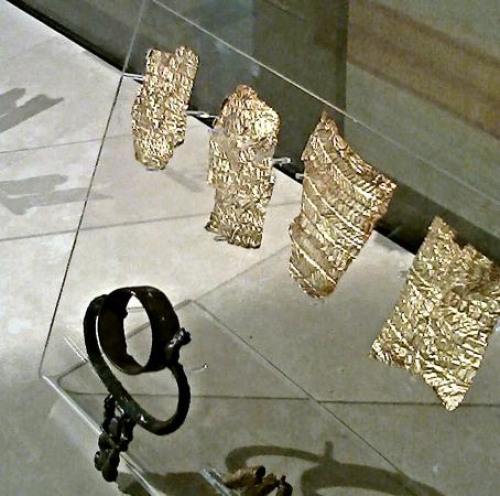Grazie ad un accordo siglato dal MiBACT con il museo Ny Calsberg Glyptotek di Copenhagen, tornerà in Italia il carro sabino a decorazioni dorate, importantissimo reperto archeologico trafugato negli anni '70 nella necropoli di Eretum, città sabina dell'antico Lazio. Esportato illegalmente, il carro era stato acquistato dal museo di Copenaghen che lo esponeva da quasi mezzo secolo insieme ai reperti della tomba del principe a cui apparteneva. Un accordo storico che mette fine ad un protratto contenzioso. Questa restituzione, insieme a quella di una serie di altri reperti sottratti dalla stessa tomba, è uno degli elementi di un estensivo programma culturale attraverso il quale il MiBACT offrirà al Glyptotek l’opportunità di migliorare la sua già significativa offerta di patrimonio culturale dell’Italia antica con prestiti di lungo periodo di reperti archeologici.
Italy’s Culture Minister, Dario Franceschini, announced in mid-July that the world-famous Sabine Chariot (il Carro di Fara Sabina), robbed from a tomb in the necropolis of Eretum in the Lazio region in the 1970s, will be returned to Italy by virtue of an historic agreement reached between the Copenhagen's Ny Calsberg Glyptotek museum and the MiBACT (Ministero dei beni e delle attività culturali e del turismo, Ministry of Cultural Heritage and Activities and Tourism). The gold-decorated chariot, dating back to VII century B.C., has been on show in the Copenhagen museum for almost 50 years, after having been taken out of Italy, illegally, along with a number of other artifacts. It was stolen from the tomb of the Sabine prince it belonged to and sold to the Danish museum. The tomb haul was trafficked by notorious Roman antiquities traffickers Robert Hecht and Giacomo Medici. The return of the objects is scheduled to start in December 2016. The transfer is expected to be completed by the end of 2017, official sources said.
In return, Italy has agreed to loan the Copenhagen museum a series of pieces of equivalent historical and artistic value. Minister Franceschini hailed the result of collaboration efforts on both sides, which put an end to a long-running dispute. Indeed, negotiations for the restitution of the disputed pieces had begun several years ago, but were broken off in 2010, at which point Italian officials contemplated legal action against the Danish museum. The Chariot is regarded as one of the most significant finds in the history of Sabine civilization to have been unearthed so far, thus its restitution marks another important step forward in the Italian cultural diplomacy. In recent years, Italy has secured the return of a string of other finds sold by Hecht and Medici, notably by several top U.S. museums including the Getty.



